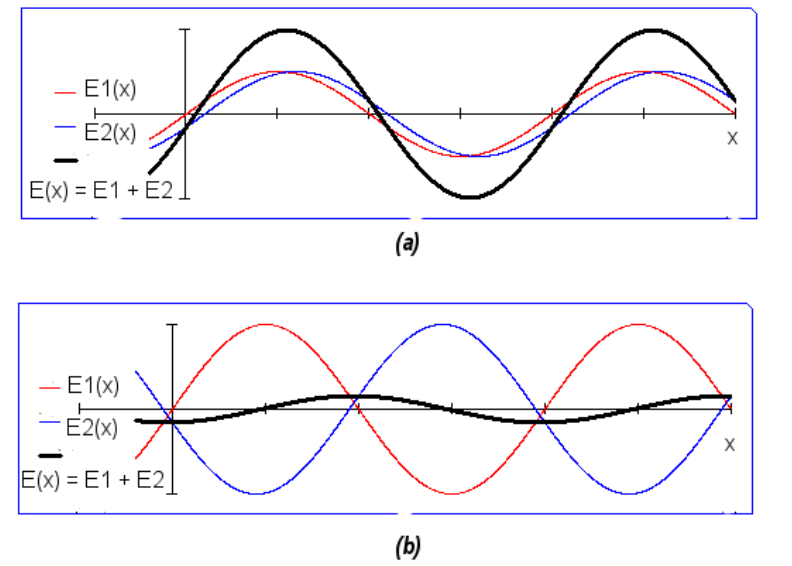
The phenomenon of interference is shown by:
A. longitudinal mechanical waves only
B. electromagnetic waves only
C. transverse mechanical waves only
D. all of the above types of wave
Answer
577.8k+ views
Hint: Interference is the superposition of individual waves, such that the amplitude of the resultant wave is the vector sum of the amplitude of the individual waves. Their resultant wave can either be constructive or destructive, depending on the interaction of the individual waves.
Complete step-by-step solution:
Interference is the property of waves, where the resultant wave is the superposition of two waves. The resultant of the two waves can interfere constructively to give a bright spot or destructively to give a dark spot. The graph of the resultant waves is called interferograms. This property of waves is applicable to all waves, like lightwave, matter waves, or gravitational waves to name a few. This is based on the principle of superposition of waves, which states that when two or more waves are incident at a point, then their resultant amplitude is the vector sum of the individual amplitudes, provided the waves are of similar nature.

If two crests or troughs interfere then they are said to form constructive interference (a), here the amplitude of the resultant wave is greater than the individual waves. Similarly, if one trough and one crest interfere, they are said to form destructive interference (b), where the amplitude of the resultant wave is lesser than the individual waves.
As the interference is a wave property and is applicable to all types of waves, the answer is D. all of the above types of wave.
Note: Interference is observed only when the incident waves are coherent i.e. they are from the same source or the frequency of the sources must be nearly the same. Also, the amplitude of the resultant wave can either be greater, lesser, or equal to the amplitude of the incident waves.
Complete step-by-step solution:
Interference is the property of waves, where the resultant wave is the superposition of two waves. The resultant of the two waves can interfere constructively to give a bright spot or destructively to give a dark spot. The graph of the resultant waves is called interferograms. This property of waves is applicable to all waves, like lightwave, matter waves, or gravitational waves to name a few. This is based on the principle of superposition of waves, which states that when two or more waves are incident at a point, then their resultant amplitude is the vector sum of the individual amplitudes, provided the waves are of similar nature.

If two crests or troughs interfere then they are said to form constructive interference (a), here the amplitude of the resultant wave is greater than the individual waves. Similarly, if one trough and one crest interfere, they are said to form destructive interference (b), where the amplitude of the resultant wave is lesser than the individual waves.
As the interference is a wave property and is applicable to all types of waves, the answer is D. all of the above types of wave.
Note: Interference is observed only when the incident waves are coherent i.e. they are from the same source or the frequency of the sources must be nearly the same. Also, the amplitude of the resultant wave can either be greater, lesser, or equal to the amplitude of the incident waves.
Recently Updated Pages
A man running at a speed 5 ms is viewed in the side class 12 physics CBSE

The number of solutions in x in 02pi for which sqrt class 12 maths CBSE

State and explain Hardy Weinbergs Principle class 12 biology CBSE

Write any two methods of preparation of phenol Give class 12 chemistry CBSE

Which of the following statements is wrong a Amnion class 12 biology CBSE

Differentiate between action potential and resting class 12 biology CBSE

Trending doubts
What are the major means of transport Explain each class 12 social science CBSE

Which are the Top 10 Largest Countries of the World?

Draw a labelled sketch of the human eye class 12 physics CBSE

Explain sex determination in humans with line diag class 12 biology CBSE

Explain sex determination in humans with the help of class 12 biology CBSE

Differentiate between homogeneous and heterogeneous class 12 chemistry CBSE




